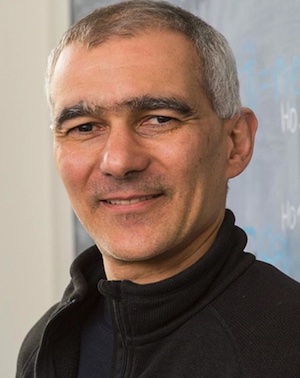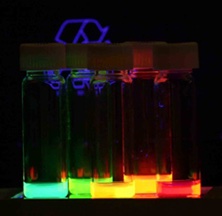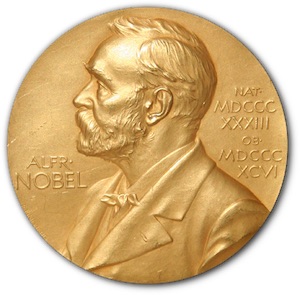By Alexander Junxiang Chen
For the “discovery and synthesis of quantum dots,” three laureates shared this year’s Nobel Prize in Chemistry, the Royal Swedish Academy of Sciences announced October 4. Two of them, Moungi G. Bawendi (ΦBK, Harvard College) and Louis E. Brus (ΦBK, Rice University) are Phi Beta Kappa members.
Ever since the early 20th century discovery of quantum mechanics, laws of physics that reign supreme at the nanoscale, chemists and physicists have sought to harness the quantum world’s often mind-bending principles to develop small yet powerful tools and devices.
Today, technologies developed from our understanding of quantum phenomena are everywhere. Semiconductor chips, the materials that power everything from the smartphones in our pockets to satellites in space, for instance, can credit their very existence to our knowledge of how to manipulate electrons at the quantum scale.
Quantum dots are particles that are so small that they can take advantage of quantum mechanical effects to emit light. Scientists had long believed that quantum dots were theoretically possible but extremely difficult to practically realize. This notion changed for the better beginning in the early 1980s when Alexei Ekimov, the third of this year’s Nobel Chemistry laureates who was then working at the Russian Vavilov State Optical Institute, finally succeeded in creating stable, functional particles.
Quantum dots were no longer a theoretical fantasy. Only a few years later, Louis Brus at Bell Labs was able to show that quantum dots could be created out of free-floating fluid particles, as long as they were small enough to exhibit quantum effects. And in 1993, Moungi Bawendi, a postdoctoral scholar under Brus was able to optimize to near perfection a process for synthesizing quantum dots, paving the way for their mass production.
Now, thirty years later, like the countless other inventions that have grown from our understanding of quantum phenomena, quantum dots have become ubiquitous in our daily lives. Modern QLED technology has enabled crystal-clear resolution on television screens and computer monitors. The sharp colors that quantum dots can produce have led medical scientists to explore their utility in imaging regions of interest in the human body, such as a particular tissue or tumor.
The sky has been and will likely continue to be the limit for what quantum dots can be used for. As the Nobel Committee waxed in their award statement, “we have just started exploring the potential of these tiny particles.”

(ΦBK, Harvard College)

ΦBK, Rice University

Quantum dots. This year’s Chemistry Nobel Prize has been awarded to three scientists who each made critical contributions to the development of these nanoparticles that take advantage of their microscopic size, as well as the laws of quantum mechanics, to emit sharp, vivid colors. Quantum dots are now used in everything from QLED screens to medical imaging devices.
Alexander Junxiang Chen is a senior at Harvard University who is pursuing a double concentration in neuroscience and chemistry. He was inducted into the Alpha Iota of Massachusetts chapter of Phi Beta Kappa in April 2023.




